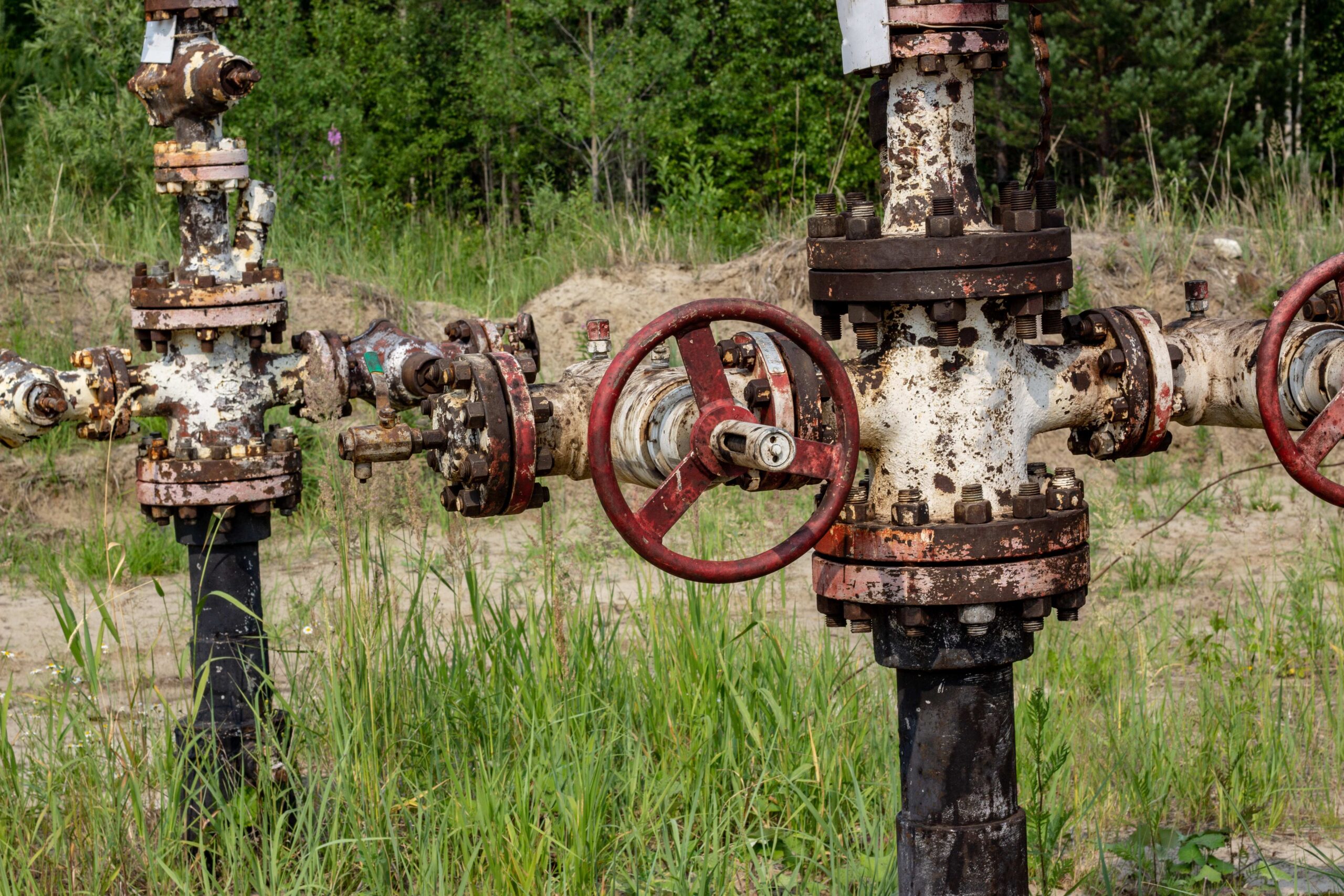This website uses cookies so that we can provide you with the best user experience possible. Cookie information is stored in your browser and performs functions such as recognising you when you return to our website and helping our team to understand which sections of the website you find most interesting and useful.
Policy Update: Methodologies Related to HFCs

In February of 2021, ACR suspended new listings of projects using the following methodologies while ACR reviewed the American Innovation in Manufacturing Act (AIM) and subsequent potential regulation in the United States as well as regulations in Canada and Mexico for potential impacts to additionality, eligibility, or baselines.
- Methodology for the Quantification, Monitoring, Reporting and Verification of Greenhouse Gas Emissions Reductions and Removals from Certified Reclaimed HFC Refrigerants (v.1.1)
- Methodology for the Quantification, Monitoring, Reporting and Verification of Greenhouse Gas Emissions Reductions and Removals from the Transition to Advanced Refrigeration Systems (v.2.0)
- Methodology for the Quantification, Monitoring, Reporting and Verification of Greenhouse Gas Emissions Reductions and Removals from the Transition to Advanced Formulation Blowing Agents in foam Manufacturing and Use (v.2.0)
The AIM Act, enacted by Congress in December of 2020, directs the U.S. EPA to address the environmental impact of hydrofluorocarbons (HFCs) by: phasing down production and consumption, maximizing reclamation and minimizing releases from equipment, and facilitating the transition to next-generation technologies through sector-based restrictions.1 Although the United States has not ratified the October 15, 2016 Kigali Amendment to the Montreal Protocol, the AIM Act’s phase-down schedule is consistent with the applicable Kigali schedule. Similarly, the Ozone-depleting Substances and Halocarbon Alternatives Regulations (ODSHAR), made under the authority of the Canadian Environmental Protection Act, 1999, and enforceable on December 29, 2016, include provisions to phase down the consumption and production of HFCs in alignment with Canada’s adoption of the Kigali Amendment to the Montreal Accord.2 Although Mexico accepted the Kigali Amendments on September 25, 2018,3 Mexico, as a Group 1 Article 5 party, is following a slower HFC phase-down trajectory (e.g., a 10% reduction in consumption below baseline by 2029 rather than by 2019 for Canada, a Main Group Non-Article 5 party) and has not yet passed legislation analogous to the United States’ AIM Act or promulgated regulations analogous to Canada’s ODSHAR.
Updates to policy changes are listed for each methodology below.
1. Methodology for the Quantification, Monitoring, Reporting and Verification of Greenhouse Gas Emissions Reductions and Removals from Certified Reclaimed HFC Refrigerants (v.1.1)
Effective immediately, ACR is accepting new listings for projects using the Methodology for the Quantification, Monitoring, Reporting and Verification of Greenhouse Gas Emissions Reductions and Removals from Certified Reclaimed HFC Refrigerants.
In the U.S., the first of several EPA rulemaking processes as directed by the AIM Act is underway and is expected to be completed in 2021 with anticipated dates of enforcement of January 1, 2022. ACR will continue to post information to this site as the rulemaking process proceeds and the exact language of the rules are finalized.
ERTs issued from this project type are considered additional until further notice for the following reasons:
- The U.S. EPA’s first proposed rule (Docket ID number EPA-HQ-OAR-2021-0044) under the AIM Act sets the HFC production and consumption baseline levels from which reductions will be made, establishes an initial methodology for allocating and trading HFC allowances for 2022 and 2023, and creates a robust, agile, and innovative compliance and enforcement system.4 As of the writing of this document, the proposed rule does not set requirements for the production of reclaimed HFC nor the purchase of reclaimed HFC. The proposed rule does not create financial incentives to reclaim HFC. Further, several HFC end-use sectors are excluded from the proposed rule or have longer compliance deadlines.
- The AIM Act, which directs, and guides EPA’s rulemaking processes, contains no language requiring HFC reclaim or mandating incentives for HFC reclaim. Section (h)(2) requires only that EPA “consider using authority to increase opportunities for reclaiming HFC refrigerants.” Subsequent EPA rulemakings may heed this directive and include more specific requirements for purchase or production of reclaimed HFC; but, as of yet, the publicly available draft rule includes no such language.
- ERT’s generated from ACR’s Methodology for the Quantification, Monitoring, Reporting and Verification of Greenhouse Gas Emissions Reductions and Removals from Certified Reclaimed HFC Refrigerants are contingent not only on the production of reclaimed HFC, but on the sale, and annual emission rates based on equipment leak rates from the EPA.
- In Canada, the Ozone-depleting Substances and Halocarbon Alternatives Regulations (ODSHAR) came into force on December 30, 2016, with additional sections in January 1, 2019. ODSHAR does not set requirements for the production of reclaimed HFC nor the purchase of reclaimed HFC. The regulations neither create financial incentives to reclaim HFC.
- Response in the HFC reclaim market from the U.S. EPA rules and Canadian regulation is possible even if the finalized rules and regulations do not require HFC reclaim or use of reclaimed HFC. However, the timing and magnitude of the response in the reclaim market cannot be known with certainty and is dependent on the speed of transition to next generation technologies in each end-use sector. ACR will continue to monitor HFC reclaim rates as available from industry groups and the U.S. EPA. The ACR Standard requires that all methodologies that rely on a performance standard for additionality be re-examined on a regular basis.
- ACR will adjust policy in response to U.S. EPA rulemaking and any subsequent regulations in Canada and Mexico to ensure integrity of all ERTs issued. ACR will continue to post information here and communicate with stakeholders as rulemaking progresses. Were U.S., Canadian, or Mexican federal, state, or local regulation to directly regulate or incentivize the production or purchase of reclaimed HFC such that the activity would be non-additional, the effective date of any rule(s) or regulation(s), once finalized, is the date of enforcement.
2. Methodology for the Quantification, Monitoring, Reporting and Verification of Greenhouse Gas Emissions Reductions and Removals from the Transition to Advanced Refrigeration Systems (v.2.0)
Effective immediately, ACR is accepting new listings for projects using the Methodology for the Quantification, Monitoring, Reporting and Verification of Greenhouse Gas Emissions Reductions and Removals from the Transition to Advanced Refrigeration Systems.
In the U.S., the first of several EPA rulemaking processes as directed by the AIM Act is underway and is expected to be completed in 2021 with anticipated dates of enforcement of January 1, 2022. ACR will continue to post information to this site as the rulemaking process proceeds and the exact language of the rules are finalized.
ERTs issued from this project type are considered additional until further notice for the following reasons:
– The U.S. EPA’s proposed rule (Docket ID number EPA-HQ-OAR-2021-0044 ) sets the HFC production and consumption baseline levels from which reductions will be made, establishes an initial methodology for allocating and trading HFC allowances for 2022 and 2023, and creates a robust, agile, and innovative compliance and enforcement system.5 As of the writing of this document, the proposed rule does not set requirements for the production of reclaimed HFC nor the purchase of reclaimed HFC. The proposed rule does not require the transition of equipment to accommodate ultra-low GWP refrigerants but rather will begin the phasedown of the highest GWP refrigerants in use currently over a period of time.
– ACR’s Methodology for the Quantification, Monitoring, Reporting and Verification of Greenhouse Gas Emissions Reductions and Removals from the Transition to Advanced Refrigeration Systems (v.2.0) credits the switch from an allowable HFC refrigerant for the applications (per EPA SNAP) to another allowable refrigerant of much lower GWP, incentivizing the rapid and large change in GWP when ARS are designed to accommodate ultra-low GWP refrigerants (i.e., < 15). This transition is additional even as the baseline allowable refrigerants are changing to those of lower GWP with regulation. The baseline material is regulated not the project material. ACR’s methodologies are updated to reflect current baseline HFC refrigerants per regulation.
– ACR’s methodology relies on baselines and project scenarios of currently allowable refrigerants for select temperature ranges and uses. These are specified by the EPA through the Significant New Alternatives Policy (SNAP) and for some states and Canada through similarly structured legislation and regulations. ACR is updating the baseline quantification to reflect HFCs that have already been phased out in certain jurisdictions and will be phased out in the coming years in others.
– ACR will adjust policy in response to EPA rulemaking and any subsequent regulations in U.S. states, Canada, and Mexico to ensure integrity of all ERTs issued. ACR will continue to post information here and communicate with stakeholders. Were U.S., Canadian, or Mexican federal, state, or local regulation to directly regulate or incentivize the production of refrigeration systems to accommodate ultra-low GWP refrigerants such that the activity would be non-additional, the effective date of any rule(s) or regulation(s), once finalized, is the date of enforcement.
3. Methodology for the Quantification, Monitoring, Reporting and Verification of Greenhouse Gas Emissions Reductions and Removals from the Transition to Advanced Formulation Blowing Agents in Foam Manufacturing and Use (v.2.0)
Effective immediately, ACR is accepting new listings for projects using the Methodology for the Quantification, Monitoring, Reporting and Verification of Greenhouse Gas Emissions Reductions and Removals from the Transition to Advanced Formulation Blowing Agents in Foam Manufacturing and Use (v.2.0).
In the U.S., the first of several EPA rulemaking processes as directed by the AIM Act is underway and is expected to be completed in 2021 with anticipated dates of enforcement of January 1, 2022. ACR will continue to post information to this site as the rulemaking process proceeds and the exact language of the rules are finalized.
ERTs issued from this project type are considered additional until further notice for the following reasons:
– The U.S. EPA’s proposed rule (Docket ID number EPA-HQ-OAR-2021-0044 ) sets the HFC production and consumption baseline levels from which reductions will be made, establishes an initial methodology for allocating and trading HFC allowances for 2022 and 2023, and creates a robust, agile, and innovative compliance and enforcement system.6 As of the writing of this document, the proposed rule does not set requirements for the production of reclaimed HFC nor the purchase of reclaimed HFC. The proposed rule does not require the transition to ultra-low GWP foam blowing agents but rather will begin the phasedown of the highest GWP blowing agents for certain end-uses over a period of time.
– ACR’s Methodology for the Quantification, Monitoring, Reporting and Verification of Greenhouse Gas Emissions Reductions and Removals from the Transition to Advanced Formulation Blowing Agents in foam Manufacturing and Use credits the switch from an allowable blowing agent for the end use (per EPA SNAP) to another allowable blowing agent of lower GWP, incentivizing the rapid and large change in GWP manufacturing systems designed to accommodate ultra-low GWP blowing agents (i.e., < 30). This transition is additional even as the baseline allowable blowing agents are changing to those of lower GWP with regulation. The baseline material is regulated not the project material. ACR’s methodologies are updated to reflect current baseline HFC blowing agents per regulation.
– ACR’s methodology relies on baselines and project scenarios of currently allowable HFCs for select end uses. These are specified by the EPA through the Significant New Alternatives Policy (SNAP) and for some states and Canada through similarly structured legislation. ACR is updating the baseline quantification to reflect HFCs that have already been phased out in certain jurisdictions and will be phased out in the coming years in others.
– ACR will adjust policy in response to EPA rulemaking and any subsequent regulations in U.S. states, Canada, and Mexico to ensure integrity of all ERTs issued. ACR will continue to post information here and communicate with stakeholders. Were U.S., Canadian, or Mexican federal, state, or local regulation to directly regulate or incentivize the production of or use of ultra-low GWP blowing agents such that the activity would be non-additional, the effective date of any rule(s) or regulation(s), once finalized, is the date of enforcement.




